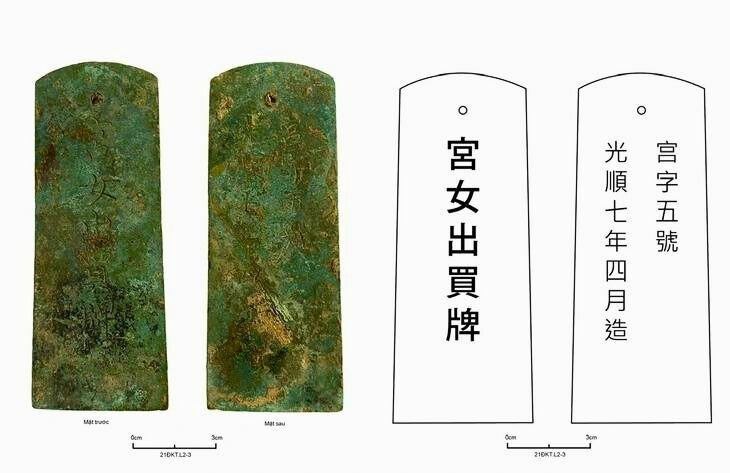
The rule at that time was that every card was granted to one person only once. The card is a flat, thin plate with a curved part on the top.
No other card similar to the maid’s card for entering or exiting the Imperial Citadel of Thang Long in the Early Le Dynasty has been found.
At archaeological sites near the Citadel, no similar relics have been discovered.
The card is a living testament to the management of the citadel under the Early Le Dynasty. This is a special item, showing grace granted to the owner, or distinguishing identity, rank, status and position.
In general, cards were divided into two groups. The first group included medals to reward those who had merit, or to show the court's grace for princes, ministers, soldiers who devoted themselves to royal court.
The second group was considered a costume to differentiate positions and titles of people in society. It was also used as kind of passport, allowing its owner to enter or exit the imperial palace and camps. In many cases, cards have both uses integrated.
During Dai Viet (the official name of Vietnam used in two periods in the past, from 1054 to 1400 and from 1428 to 1804), these cards possibly had been used since the country's founding, or even earlier. However, the earliest records show that the cards were used and strictly managed in the Early Le dynasty.
Dai Viet Su Ky Toan Thu (Complete Annals of Dai Viet), noting the rewarding the participants of a battle in 1427, wrote that those who deserved well of their country, were given cards, money and silk.
These cards were made of silver and perhaps were issued to recognize merit and show the King’s grace to those who contributed to victory, and were not registration cards.
No document showing the exact moment when the Le Dynasty began using the cards as pass cards has been found.
Analysts, after considering materials in the past, have concluded that at least until 1434, the entry and exit to and from the Imperial citadel was not controlled by cards, but by documents granted by governing bodies of individuals.
The cards for palace maids to enter and exit the inner palace during the Early Le Dynasty were issued to maids who had to leave the palace to buy things for daily activities. The cards and the list of maids were cross-checked to prevent fraud.
Tinh Le